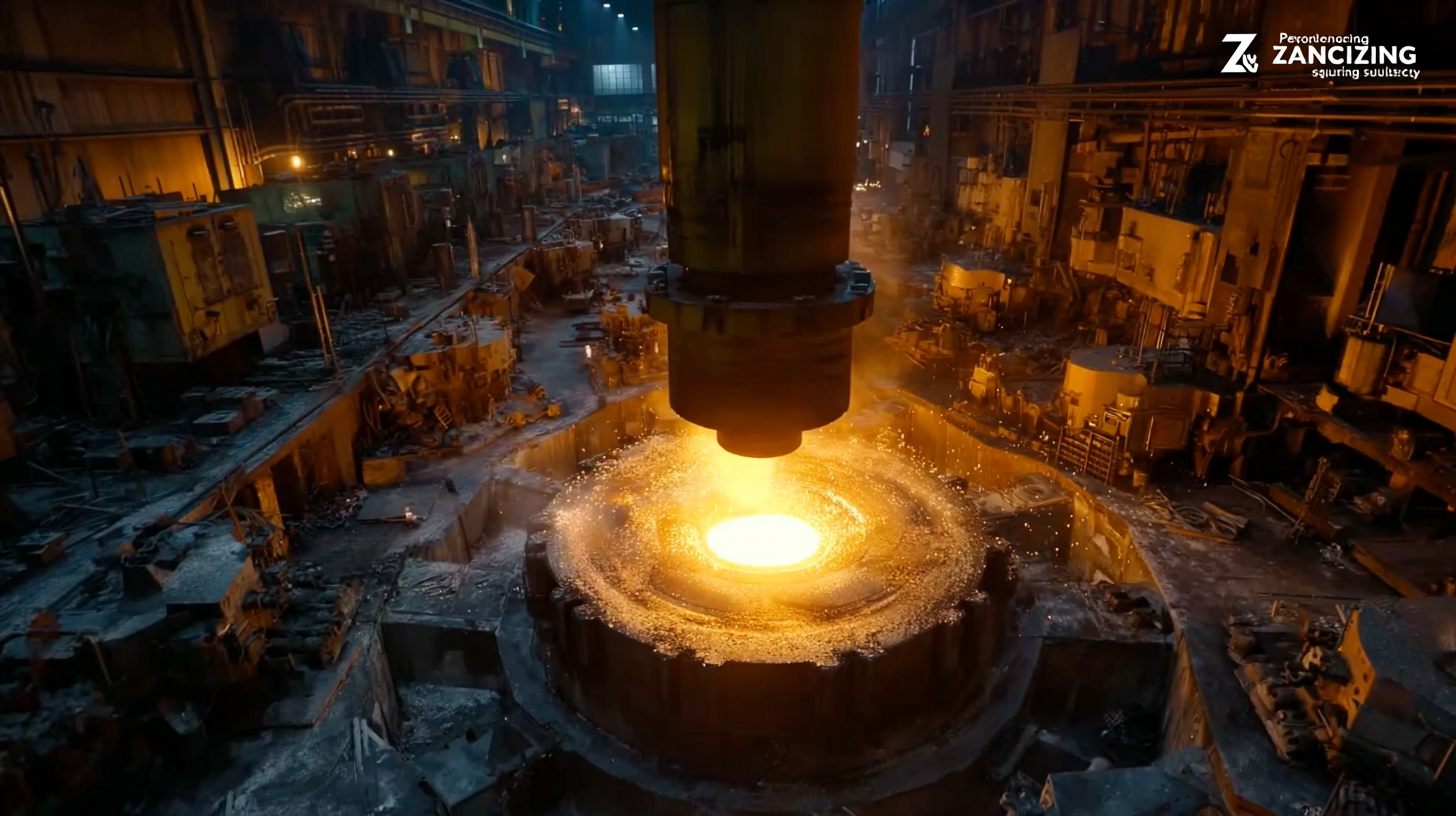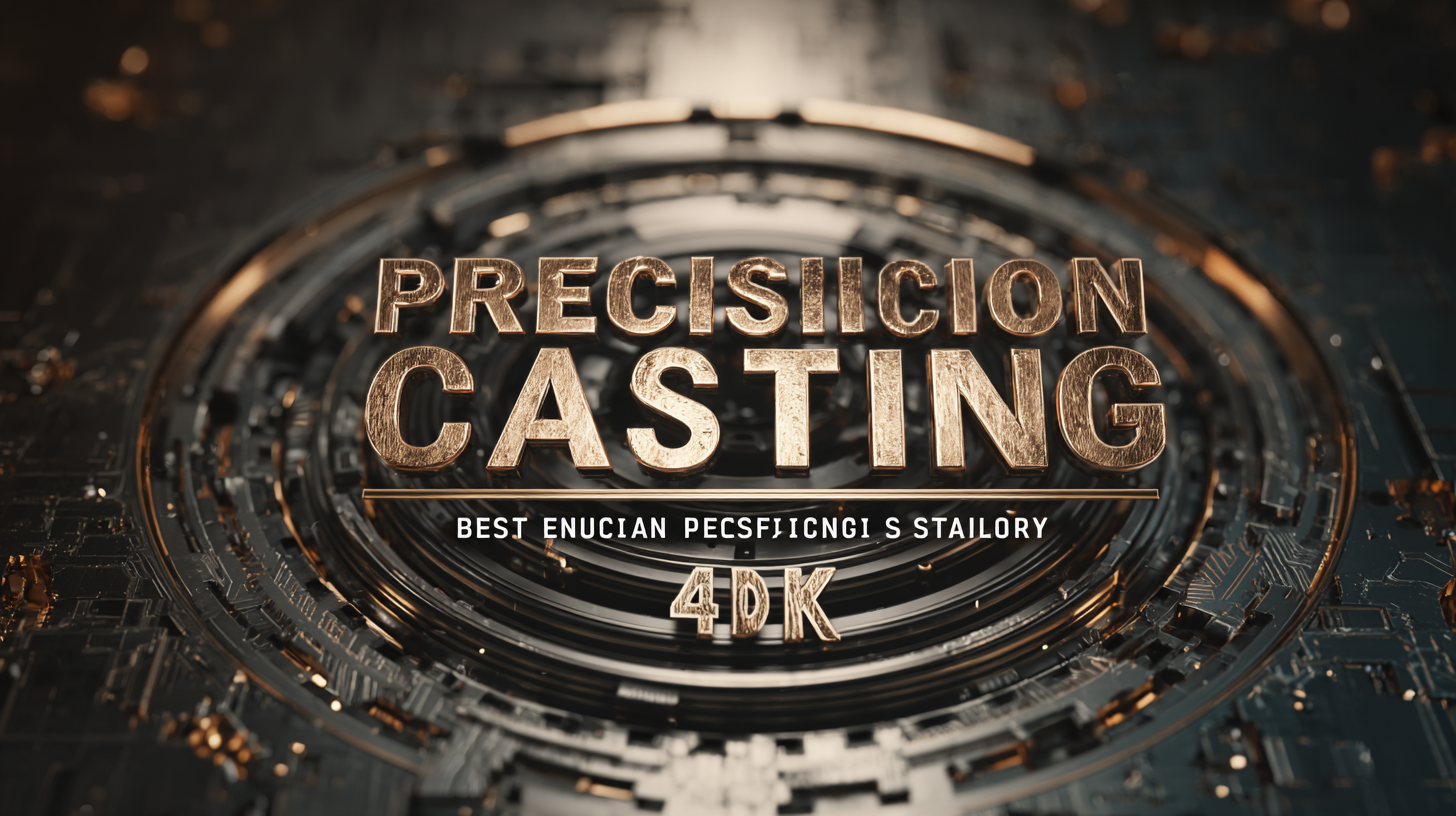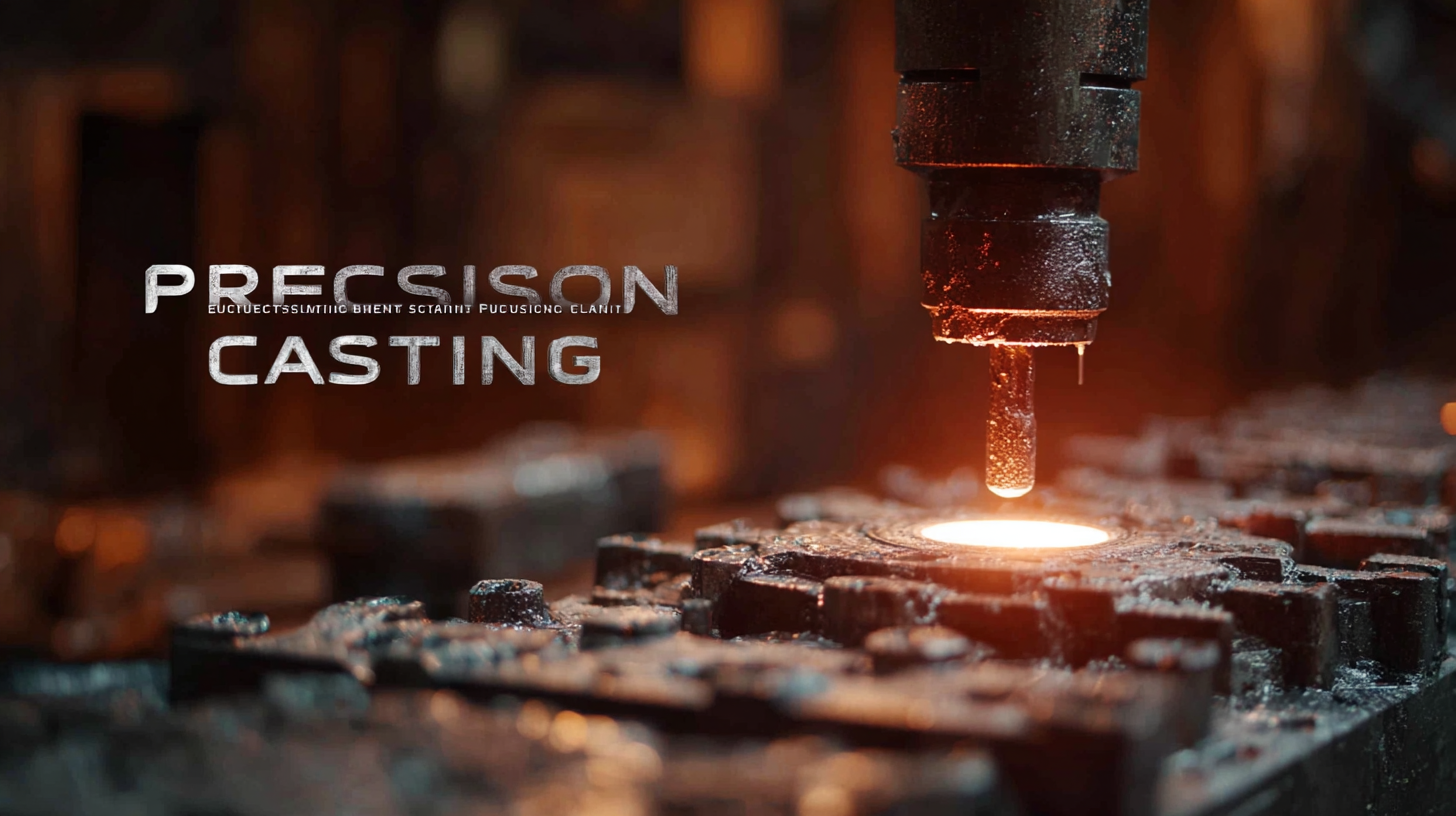The precision casting industry is projected to experience significant growth, driven by advancements in technology and increasing demand for high-quality components across various sectors. According to a recent market analysis, the global precision casting market is anticipated to reach $25 billion by 2025, with a compound annual growth rate (CAGR) of over 7%. However, achieving optimal quality standards in precision casting remains a challenge for many manufacturers. Factors such as complex geometries, material inconsistencies, and stringent industry regulations contribute to the difficulty of meeting these standards. As professionals in the field strive to enhance process efficiencies and material sourcing, understanding the challenges at hand becomes crucial for maintaining competitive advantage and ensuring customer satisfaction in this rapidly evolving market.

Precision casting is a critical process in various industries, known for its ability to produce intricate geometries and high-quality finishes. However, maintaining the specified tolerances presents several challenges. Factors such as material variability, process consistency, and environmental impacts play significant roles in the ability to achieve these stringent standards. For instance, fluctuations in temperature during the melting and pouring stages can lead to dimensional inaccuracies in the final product, compromising the required tolerances.
Moreover, the precision casting industry faces the challenge of innovation versus tradition. Many companies rely on established methodologies that may not incorporate the latest advancements in technology or materials science. This disparity can hinder their ability to maintain precision casting tolerances effectively. Furthermore, certification and regulatory compliance add layers of complexity, as manufacturers must not only meet internal standards but also adhere to external guidelines. Engaging in continuous training and investing in cutting-edge technology can aid in overcoming these challenges, ensuring that the industry keeps pace with evolving quality demands.

Achieving high precision casting quality is a multifaceted challenge that heavily relies on key factors such as material selection and temperature control. The choice of material directly influences the integrity and performance of the final product. Different materials possess unique properties, which can significantly affect their suitability for specific applications. For instance, alloys that might be perfect for high-stress environments must be chosen judiciously to ensure optimal casting quality. The right material not only determines the casting's mechanical strength but also its resistance to wear and corrosion, making it crucial to analyze the requirements of each project before making selections.
Temperature control is another pivotal aspect of the casting process that cannot be overlooked. The melting and pouring temperatures of the selected materials need meticulous regulation to minimize defects such as porosity and shrinkage. Variations in temperature can lead to uneven cooling, resulting in structural weaknesses or surface imperfections. Employing advanced temperature monitoring systems can enhance precision in maintaining the ideal thermal conditions, ensuring a uniform and high-quality casting finish. By focusing on these critical factors, manufacturers can navigate the complexities of precision casting more effectively, ultimately achieving superior quality standards.
In the realm of precision casting, achieving the highest quality standards is a multifaceted challenge. One of the most significant contributors to overcoming these challenges is technology. Modern advancements in casting technology, including computer-aided design (CAD) and simulation software, have revolutionized the way manufacturers approach precision casting. These tools allow for meticulous planning and modeling before the actual casting process begins, greatly reducing the likelihood of errors and defects. By simulating the casting process, engineers can identify potential issues, optimize designs, and ensure that the final products meet strict quality standards.
Moreover, the implementation of automation and robotics in casting operations enhances efficiency and consistency. Automated systems can carry out repetitive tasks with precision, minimizing human error and improving overall product quality. Techniques such as 3D printing of molds and cores offer not only speed but also the flexibility to create complex geometries that were previously difficult to achieve. Additionally, advanced materials and coatings developed through research are improving the durability and performance of castings, further elevating industry standards. As technology continues to evolve, its role in refining precision casting processes will be crucial in overcoming existing challenges and achieving superior quality outcomes.
This bar chart illustrates the various challenges faced in achieving optimal precision casting quality standards over the years. The metrics include factors such as technology adaptation, skilled labor availability, raw material quality, and regulatory compliance.
Common defects in precision casting can significantly undermine the integrity and functionality of the final product. Among the most prevalent issues are porosity, shrinkage cavities, and dimensional inaccuracies. Porosity typically arises during the cooling phase when gas bubbles become trapped within the metal, leading to weakened structures. This issue can often be mitigated by optimizing the melting process and ensuring proper venting during mold preparation.
Another frequent defect is shrinkage cavities, which occur as the metal solidifies and contracts. These can be addressed by careful selection of materials and designing molds that promote uniform cooling. Additionally, maintaining adequate feeding systems can help circumvent these defects by ensuring a continuous flow of metal during solidification. Lastly, dimensional inaccuracies can stem from variability in the casting process, such as improper mold alignment or inconsistent pouring techniques. Regular quality checks and the use of advanced technologies like computer simulation can greatly enhance precision, leading to more reliable casting outcomes.

In the fast-paced world of manufacturing, the economic impact of achieving high-quality precision casting standards is profound. According to a report by the Precision Metalforming Association, high-quality precision casting can lead to a reduction in production costs by up to 20%. This reduction is primarily due to decreased rework and scrap rates, which are critical factors in manufacturing efficiency. Manufacturers who prioritize precision casting processes not only improve the quality of their end products but also enhance overall operational efficiency, allowing for more competitive pricing in a global market.
To maintain these standards and promote economic benefits, it is essential to implement stringent quality control measures throughout the casting process. Utilizing advanced technologies such as Computer-Aided Design (CAD) and sophisticated simulation software can help manufacturers predict potential issues and optimize designs before actual production.
Tip: Regularly train your workforce on the latest precision casting techniques and quality standards to ensure that the entire team is aligned with the quality goals. Additionally, investing in automated inspection systems can significantly enhance the accuracy of quality assessments, further driving cost efficiency.
When manufacturers commit to high-quality precision casting, they not only benefit economically but also gain a significant edge over competitors. Data from the National Association of Manufacturers shows that businesses focusing on superior quality can experience profit margins increase by up to 15%. This investment in quality paves the way for sustainable growth in the ever-evolving manufacturing landscape.




